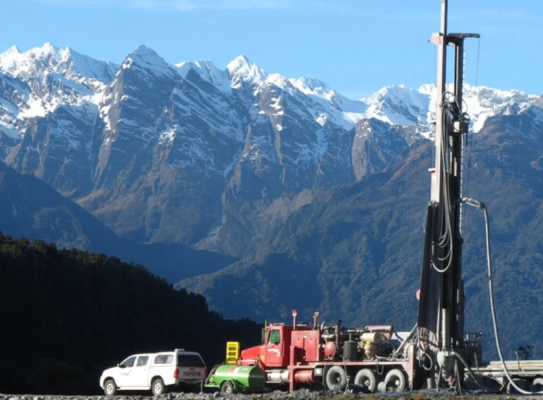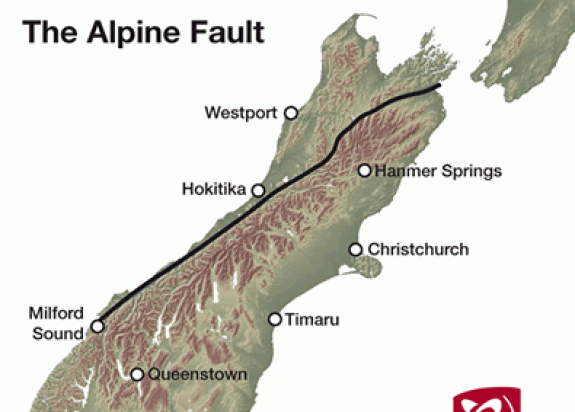The drilling project that we're undertaking is a three-phase process and the rig that we have is the one that we use for the second phase of the drilling experiment it's a typical drill rig that's used in the minerals exploration industry.
It's drilling into what's known as the basement rock which is this same hard rock that you see on all the hills around the place here.
At present, the drill rig is using a drill bit known as a polycrystalline diamond bit. It has teeth on it and it chews it's way through the rock, creating chips known as 'cuttings'.
So the bit is down there in the ground chewing up the rock, and up above it we have a whole lot of circulating fluids, and the chips of rock get caught up in the fluid and they're brought to the surface and you can see this outflow of mud that appears, and in it are all these little chips of rock.
Our geologists will go to the rig, they take the 'cuttings' and wash them. Then we take that material and we split it up.
We separate out the quartz chips which are white, and we have a representative sample that has no quartz chips. Those two samples are passed on to that the thin section preparation team.
A thin section is a sliver of rock that has a thickness of 30 microns - that is a 30,000th of a millimeter. It is so thin that if you pass light through it you can see through it.
It's a method that geologists typically use to identify different minerals that make up the structure of a rock. In our case it's really important that we have those thin sections so that we can work out which part of the rock sequence we are in.
There are some really diagnostic minerals and some really diagnostic shapes to the minerals that are going to tell us where we are.
we expect the rock to change character little bit as we approach the Alpine Fault, that's because the alpine fault is sheering this rocket at depth and it breaks up the minerals, it makes them into finer grain sizes and it changes the way they're arranged. Based on what we can observe in terms of the grain size and the arrangement of the minerals it tells us as geologists how close we are to the principal slip surface of the alpine fault.
There is a point at which we can tell we are about 300 meters above the principal slip surface of the Alpine Fault and when we hit that point, we switch to coring which is the third phase of the drilling process.
We all hope that someday we'll be able to predict earthquakes, but it is not something realistic that geologists can offer New Zealanders, or the rest to the world.
It is realistic that we can help people to understand what ground shaking is likely from the next earthquake, what's the hazard scenario that I have to be prepared for personally, what is likely to happen at my house or at my workplace.
If you know what is likely then you can be prepared for that.
The kind of research we're doing here is really important because the processes that happen like fracturing of the rock change the kind of earthquake that is going to be generated.
What we are doing in this project in particular is helping to understand what our realistic earthquake scenarios are.
It's really important for New Zealanders to understand what's possible so they can be prepared, and our whole society - our emergency management, the people that legislate how houses are built, we can do that kind of design, that kind of planning as appropriately as possible.


